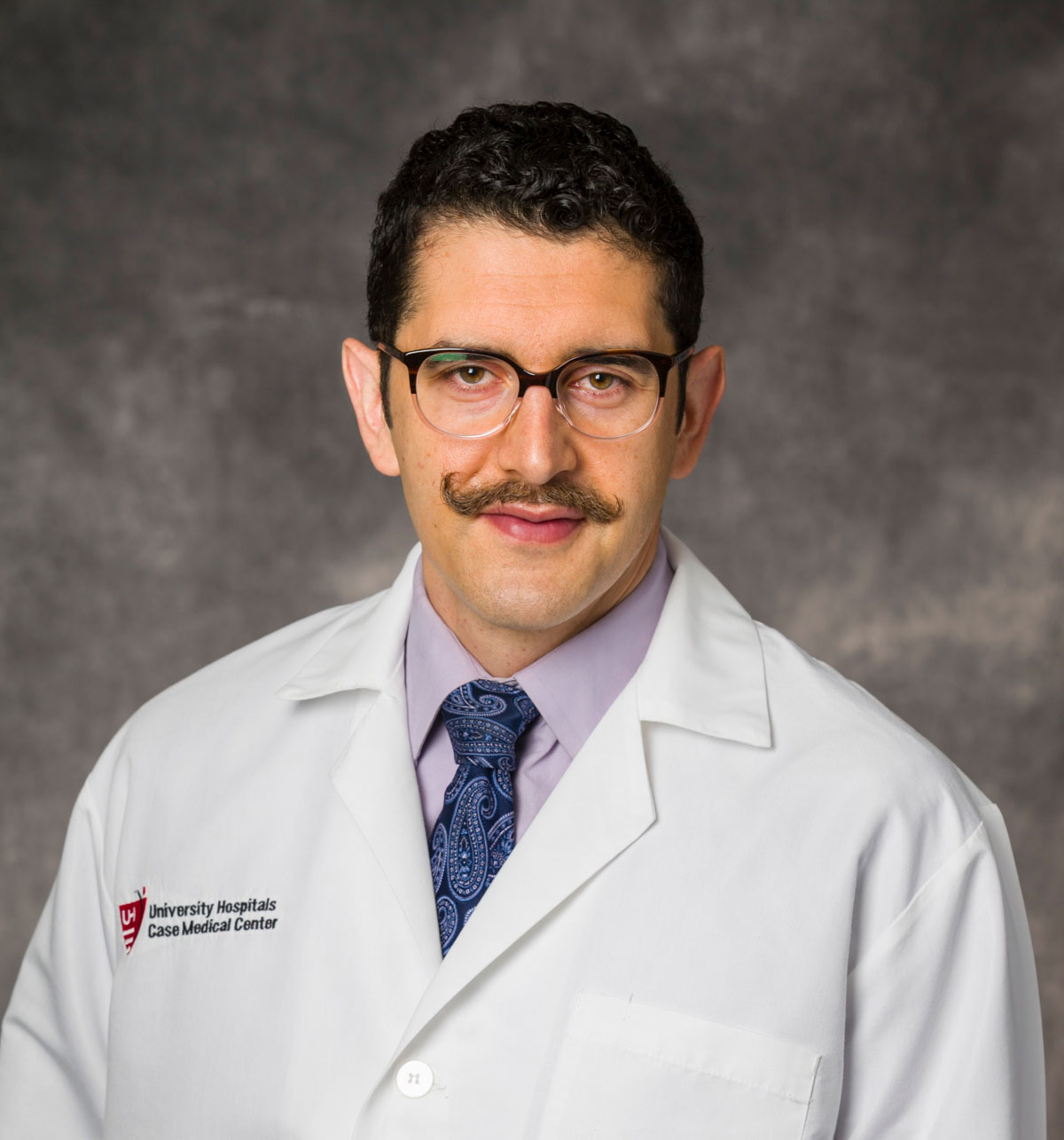Genetic Sequencing Helps Predict H. Pylori Treatment Resistance
October 21, 2020
Next-generation sequencing can help dramatically lower burden on patients
Innovations in Digestive Health | Fall 2020
 Navid Sadi, MD, PhD
Navid Sadi, MD, PhD Linda C. Cummings, MD, MS
Linda C. Cummings, MD, MSPrecision medicine is an emerging field that aligns with University Hospitals’ dedication to patient-centered health. The UH Diagnostic Institute uses advanced techniques and technologies to identify opportunities for tailored and targeted therapies, most recently a persistent and problematic “stomach bug.”
Helicobacter pylori (H. pylori) is a gram-negative bacteria that damages the stomach and duodenum. Because it’s a common cause of peptic ulcer disease and chronic gastritis, as well as a risk factor for gastric cancer and gastric B-cell lymphoma, it’s important to get rid of the bacteria. However, the main component of treatment — antibiotics — has become less effective over time due to increasing antibiotic resistance.
Roughly 30 percent of patients in northern Ohio are infected with H. pylori that is resistant to recommended therapy, says Navid Sadri, MD, PhD, chief of the Division of Genomic and Molecular Pathology at University Hospitals Cleveland Medical Center and a member of the University Hospitals Diagnostic Institute, and Assistant Professor, Department of Pathology, Case Western Reserve University School of Medicine. When the first round of antibiotics fails, patients often undergo a lengthy trial-and-error process to find a combination of antibiotics, proton pump inhibitors and other medications to eradicate this damaging bacteria.
Thanks to advances in genetics and technology, the UH Diagnostic Institute has found a better way. Dr. Sadri and a team of researchers developed a novel next-generation sequencing (NGS) assay to detect H. pylori mutations. These mutations indicate resistance to particular types of antibiotics.
“We’re looking at the genetic code of each person’s bacteria to predict which antibiotic regimen is best suited to get rid of it,” Dr. Sadri says. “This will change the way we treat these patients.”
Gastroenterologist Linda C. Cummings, MD, MS, and Associate Professor at the School of Medicine, says the addition of NGS dramatically lowers the patient burden.
“Treatment regimens for H. pylori are complex and involve multiple medications taken up to four times a day,” Dr. Cummings says. “Some may take multiple regimens before we find one that works. This technology tests for mutations and provides a detailed report so we can recommend a treatment more likely to be effective.”
Previous studies have shown that H. pylori culture and sensitivity testing is an effective method to detect resistance, but the long incubation time and cost have prohibited widespread use. The NGS method used at UH is both cost-effective and fast: pathologists can have results within a week.
The NGS method tests for mutations linked to three specific antibiotics: clarithromycin, tetracycline and levofloxacin, all commonly used in H. pylori treatment regimens. An increase in resistance has been reported in all three. However, clarithromycin resistance — used to treat strep throat, pneumonia and Lyme disease, among other conditions — is especially stubborn.
Partly due to increased antibiotic use generally, the clarithromycin resistance rate in the United States has increased from 10 percent to 24 percent in the 1990s to up to 70 percent more recently.1 At the same time, the common H. pylori triple therapy of proton pump inhibitor (PPI), clarithromycin and amoxicillin is effective only 18 percent of the time in clarithromycin-resistant strains, but 88 percent effective in susceptible strains.
Sadri and team’s study, which was published last year in the Journal of Clinical Microbiology, found that of 126 specimens with H. pylori, 73 percent contained mutations indicating resistance. While treatment failure in those cases ranged from 23 percent to 69 percent, specimens without mutations were eradicated successfully.
The NGS assay is now part of the UH standard of care for H. pylori infection. When patients present with a condition that requires a gastric biopsy and the pathology reveals H. pylori, a sample automatically goes to pathology for NGS testing.
“Physicians don’t have to request the assay,” Dr. Cummings says. “If the biopsy shows H. pylori, the specimen is automatically sent for the NGS assay. The NGS assay report also reminds clinicians to think about antibiotics patients have already been exposed to. If they’ve already been exposed to clarithromycin or another macrolide, they may not respond to a regimen containing a macrolide.”
For more information about H. pylori NGS testing, call 216-983-1803.
Reference
1Nezami BG, Jani M, Alouani D, Rhoads DD, Sadri N. Helicobacter pylori Mutations Detected by Next-Generation Sequencing in Formalin-Fixed, Paraffin-Embedded Gastric Biopsy Specimens Are Associated with Treatment Failure. J Clin Microbiol. 2019 Jun 25;57(7):e01834-18. doi: 10.1128/JCM.01834-18. PMID: 31068413; PMCID: PMC6595463.


